| |
Charleston’s new International African American Museum tells a stark, expansive story
By Tom Adkinson
November 3, 2023
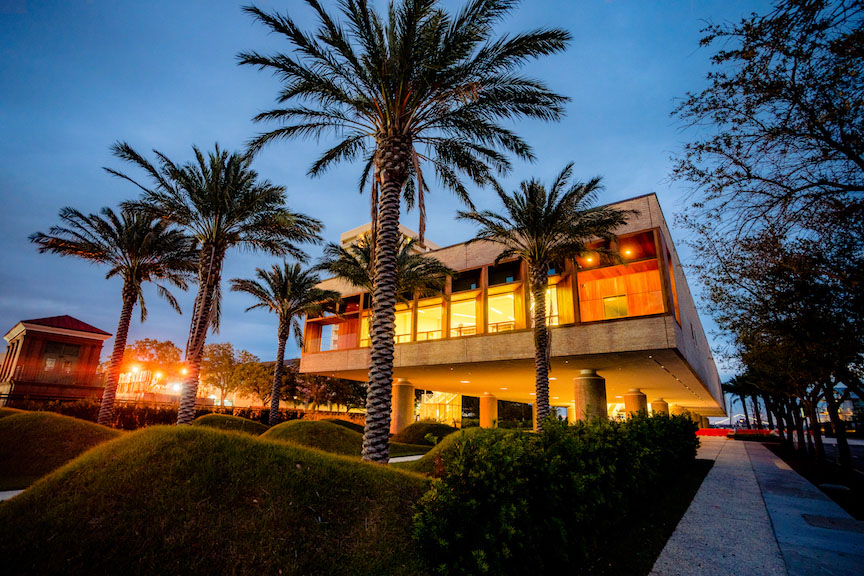
The International African American Museum rests on pillars above Gadsden’s Wharf, where 150,000 enslaved Africans ended their voyages. Image courtesy of Explore Charleston
|
CHARLESTON, S.C. – Charleston’s International African American Museum has a major focus on slavery, but it is not a slavery museum. Instead, it is a museum about the much larger story of African American culture and history that is part of a global African diaspora.
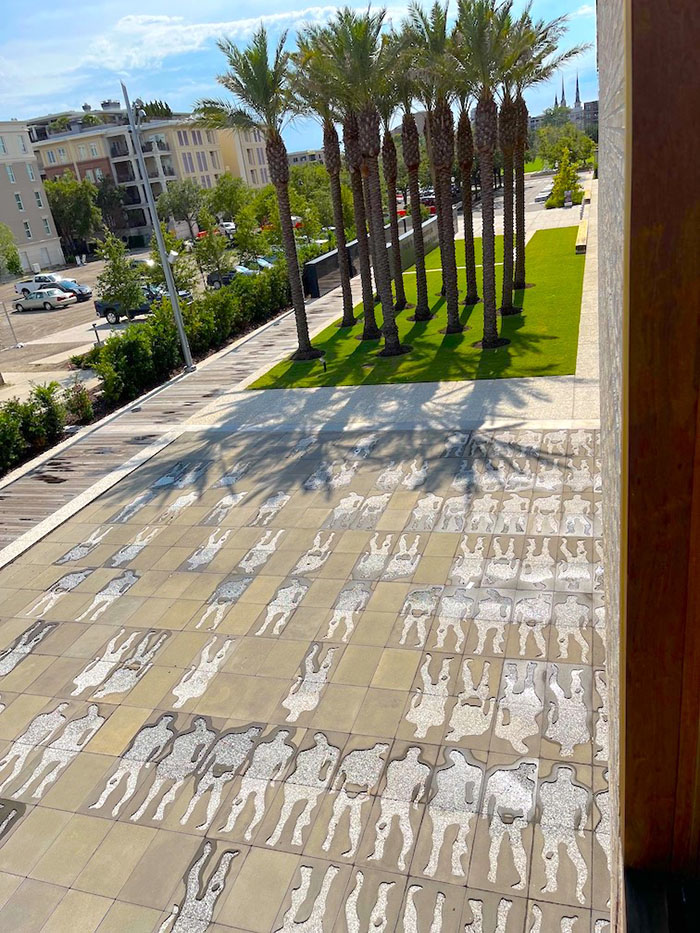
An artist’s concept of the hold of a slave ship becomes clear when observed from inside the museum. Image by Tom Adkinson
|
The International African American Museum (IAAM) opened in mid-2023 on a spot of historic importance – Gadsden’s Wharf in the heart of Charleston. This is where approximately 150,000 enslaved African men, women and children stepped off of sailing ships, first into colonial Charleston and then American Charleston.
The first arrived in 1670, and they kept coming for the next 137 years. One of the museum’s architects said “the site is more important than the building itself.” Their numbers accounted for perhaps 40 percent of all slaves brought to America.
When you examine the museum building, you notice that it was built over Gadsden’s Wharf, not on it. The IAAM rests on 18 cylindrical columns 13 feet above the ground, and underneath part of the building is a haunting work of art.
That work of art is a shallow fountain reminiscent of a tidal pool, and at the bottom of the pool are full-size outlines of human figures representing the enslaved Africans packed into the holds of ships crossing the Atlantic Ocean.
The IAAM makes you examine the reality of a slave trade that lasted 366 years – 36,000 documented voyages that thrust 12.5 million Africans into bondage. In Africa, they were parts of thriving cultures – farmers, craftsmen, artisans and more. As a major exhibit about South Carolina rice plantations spells out, many were enslaved for specific skills, such as construction of waterways.
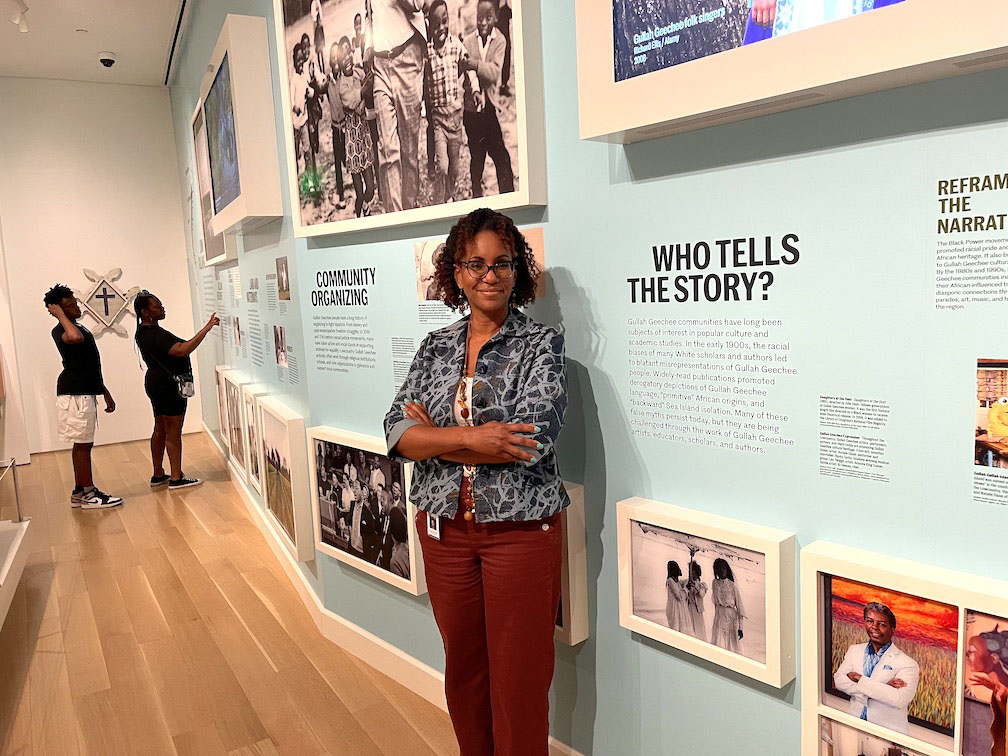
Dr. Tonya Matthews, IAAM president and CEO, says seeing strangers discuss museum exhibits is a source of joy. Image by Tom Adkinson
|
Dr. Tonya Matthews, IAAM’s president and CEO, sees the museum as a place to inspire learning and to foster understanding.
“The two scariest words in English are ‘algebra’ and ‘racism.’ Parents freak out when they have to teach their children about these topics,” she said with a big smile.
“The museum deals with tricky, sticky and challenging topics, but we (today’s society) are in a new era to discuss these topics. Ears are open,” she said, adding that the museum can be “a gentle, inspiring neighbor to spark conversations.”
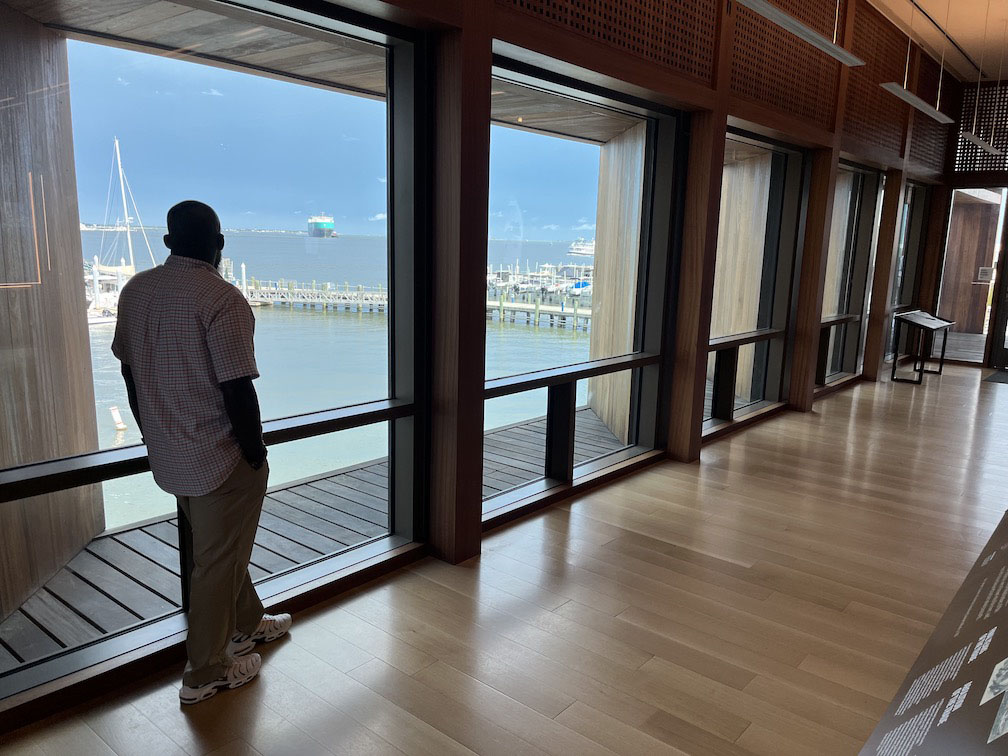
An IAAM visitor watches as a modern container ship enters Charleston Harbor, following a route slave-holding ships took for 137 years. Image by Tom Adkinson
|
The museum examines broad topics such as the immense scale of the transatlantic slave trade that deposited Africans from London to Boston and from Charleston to the Caribbean and South America.
It also focuses in on aspects of African American history such as the Buffalo Soldiers, Pullman porters, the Mardi Gras Indians of New Orleans and the Civil Rights movement of the mid-1900s.
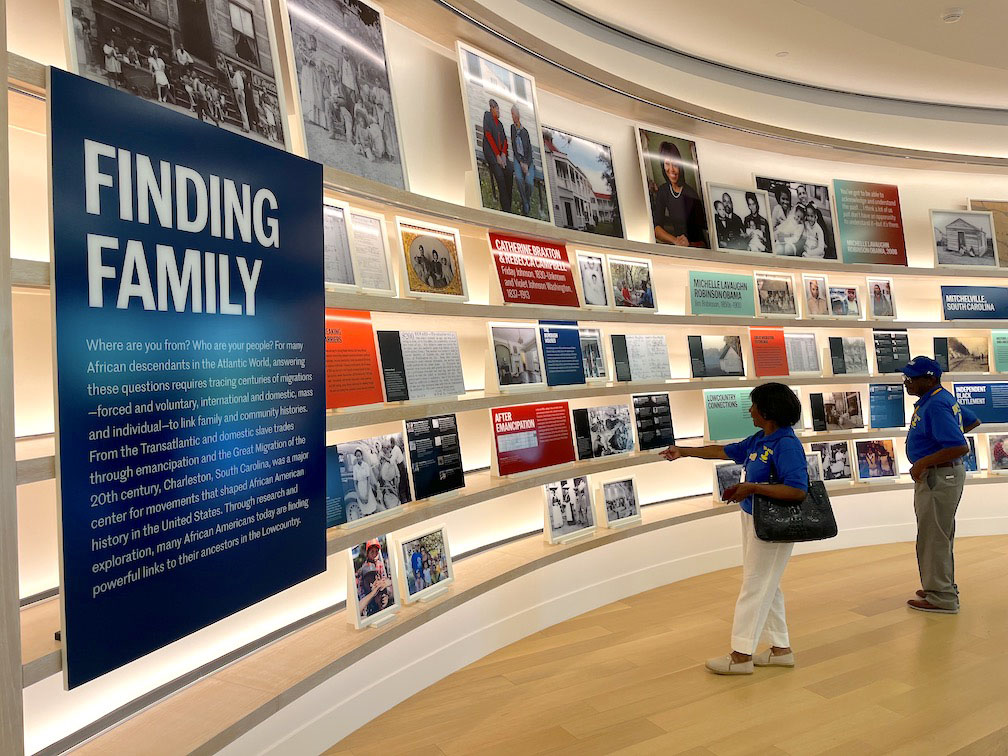
Visitors examine genealogical stories told in photos and text in the Family Research Center. Image by Tom Adkinson
|
It is interesting to observe museum guests’ reactions. Sometimes you see solitary, pensive responses, but often you see family members urging each other to examine a display or read a particular panel, or you hear older visitors telling stories of their lived experiences to younger generations. Sometimes, the museum’s contents inspire strangers to talk with strangers.
“When I see people talking with others . . . that’s the holy grail of museums,” Dr. Matthews said.
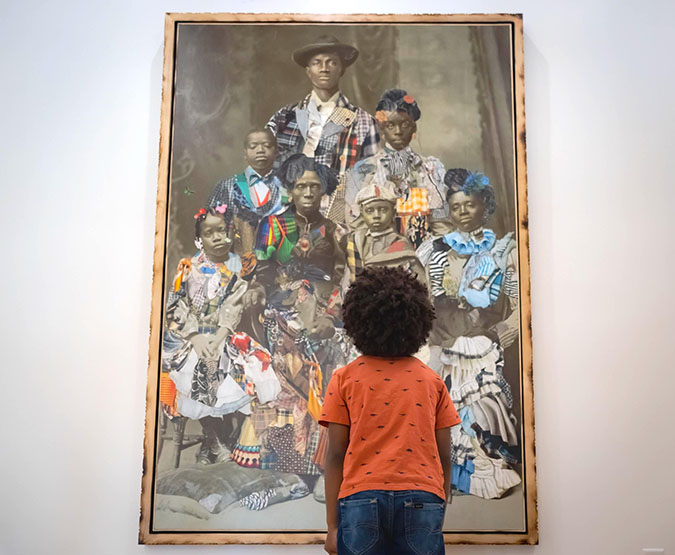
A young IAAM visitor studies a multi-generational portrait of a Black family. Image courtesy of Explore Charleston
|
One of the IAAM’s most important components is the Center for Family Research that helps people connect with their family histories and ancestors. Blacks in America often can’t see very far back into generations, but the center has archives of marriage records, family Bibles, obituaries and records of free people of color that can help. Pension files of men who served in the U.S. Colored Troops during the Civil War are another resource.
An IAAM ticket includes admission to a 30-minute “Getting Started with Genealogy” program (Tuesday through Friday). For a fee, you can book a virtual one-on-one consultation with a staff researcher.
Trip-planning resources: IAAMuseum.org and ExploreCharleston.com
|



